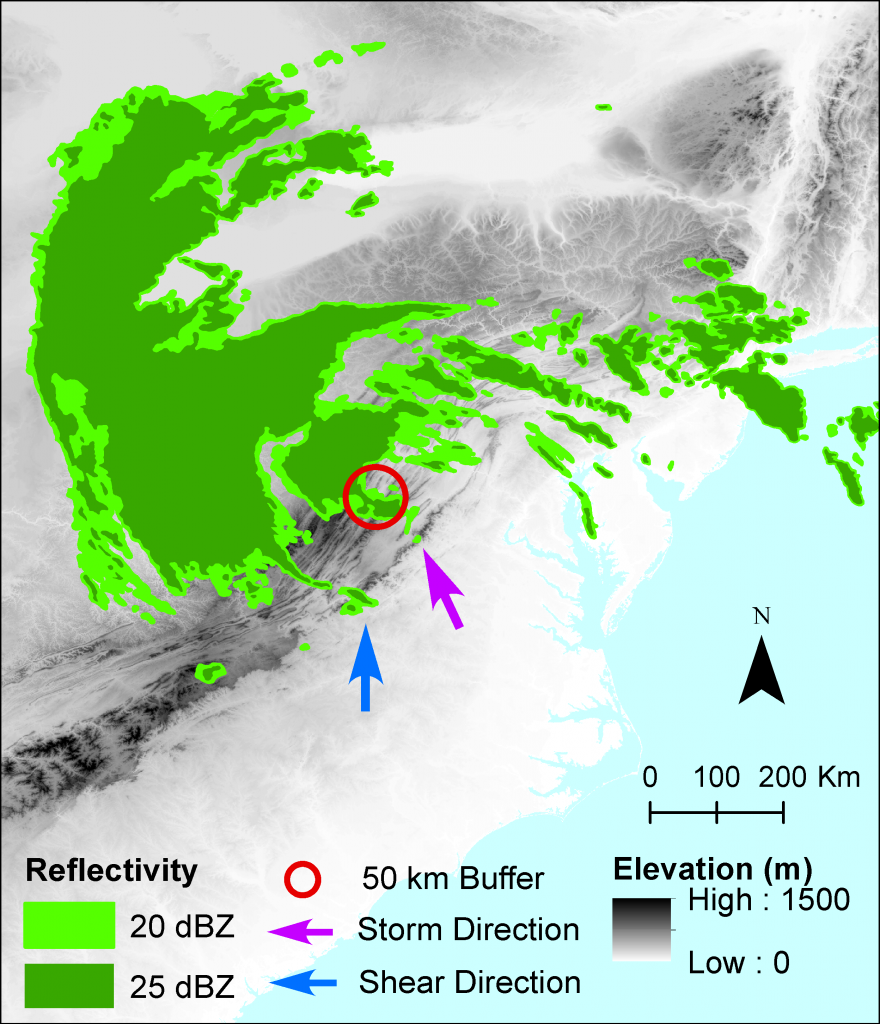 MATYAS, TANG, ZICK – Using an Object-Based Approach to Quantify the Spatial Structure of Reflectivity Regions in Hurricane Isabel (2003). Part I: Comparisons between Radar Observations and Model Simulations
MATYAS, TANG, ZICK – Using an Object-Based Approach to Quantify the Spatial Structure of Reflectivity Regions in Hurricane Isabel (2003). Part I: Comparisons between Radar Observations and Model Simulations
Corene J. Matyas, Stephanie E. Zick, Jingyin Tang
Article first published online: 25 APR 2018 Monthly Weather Review
ABSTRACT: When a hurricane undergoes extratropical transition (ET), its rainbands evolve from a circular and compact shape to a more elongated, fragmented, and dispersed configuration with an exposed circulation center. This study calculates five metrics to measure these spatial changes in reflectivity regions as Hurricane Isabel (2003) underwent ET. A mosaic of observations from the Weather Surveillance Radar-1988 Doppler (WSR-88D) network is compared to reflectivity simulated by the Advanced Research Weather Research and Forecasting (WRF-ARW) Model. Six simulations are performed by varying the cumulus and microphysics parameterizations to produce a range of reflectivity configurations. A bias correction is applied to model-simulated reflectivity prior to the calculation of spatial metrics because lower reflectivity values are generally underrepresented, while higher values are generally overrepresented. However, the simulation with Kain–Fritsch cumulus and Morrison two-moment microphysics overpredicts reflectivity by 3–4 dBZ at all levels. We demonstrate that the spatial metrics effectively capture structural changes as reflectivity regions became more fragmented and dispersed and the center became more exposed. In this case study, the results were more sensitive to the choice of cumulus physics, compared with the choice of microphysics. The Kain–Fritsch simulations produce shapes that are too circular and solid when compared with WSR-88D observations, as the hurricanes lack distinct outer rainbands. Simulations with Tiedtke cumulus produce an elongated main reflectivity region as in WSR-88D, but with separate inner and outer rainbands that are too dispersed and fragmented. These results demonstrate the value in measuring spatial patterns rather than assessing model performance using visual inspection alone.
Read the full publication at Monthly Weather Review